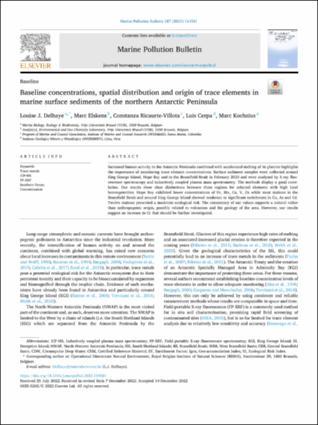Please use this identifier to cite or link to this item:
https://hdl.handle.net/20.500.12544/4307Files in This Item:
| File | Description | Size | Format | |
|---|---|---|---|---|
| Delhaye-Baseline_concentrations...Antarctic_Peninsula-Abstract.pdf | Resumen de artículo | 194.05 kB | Adobe PDF | View/Open |
Items in DSpace are protected by copyright, with all rights reserved, unless otherwise indicated.











